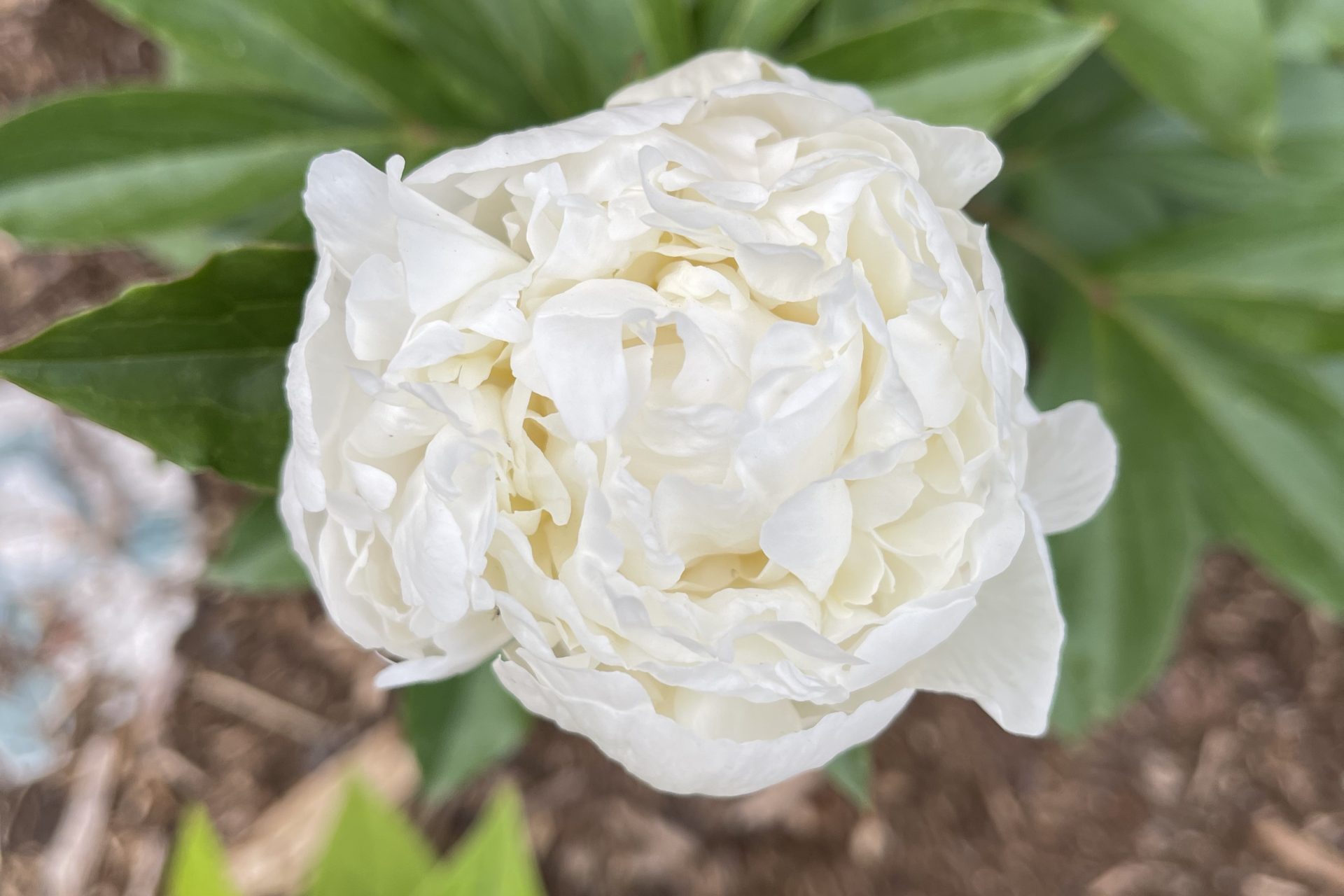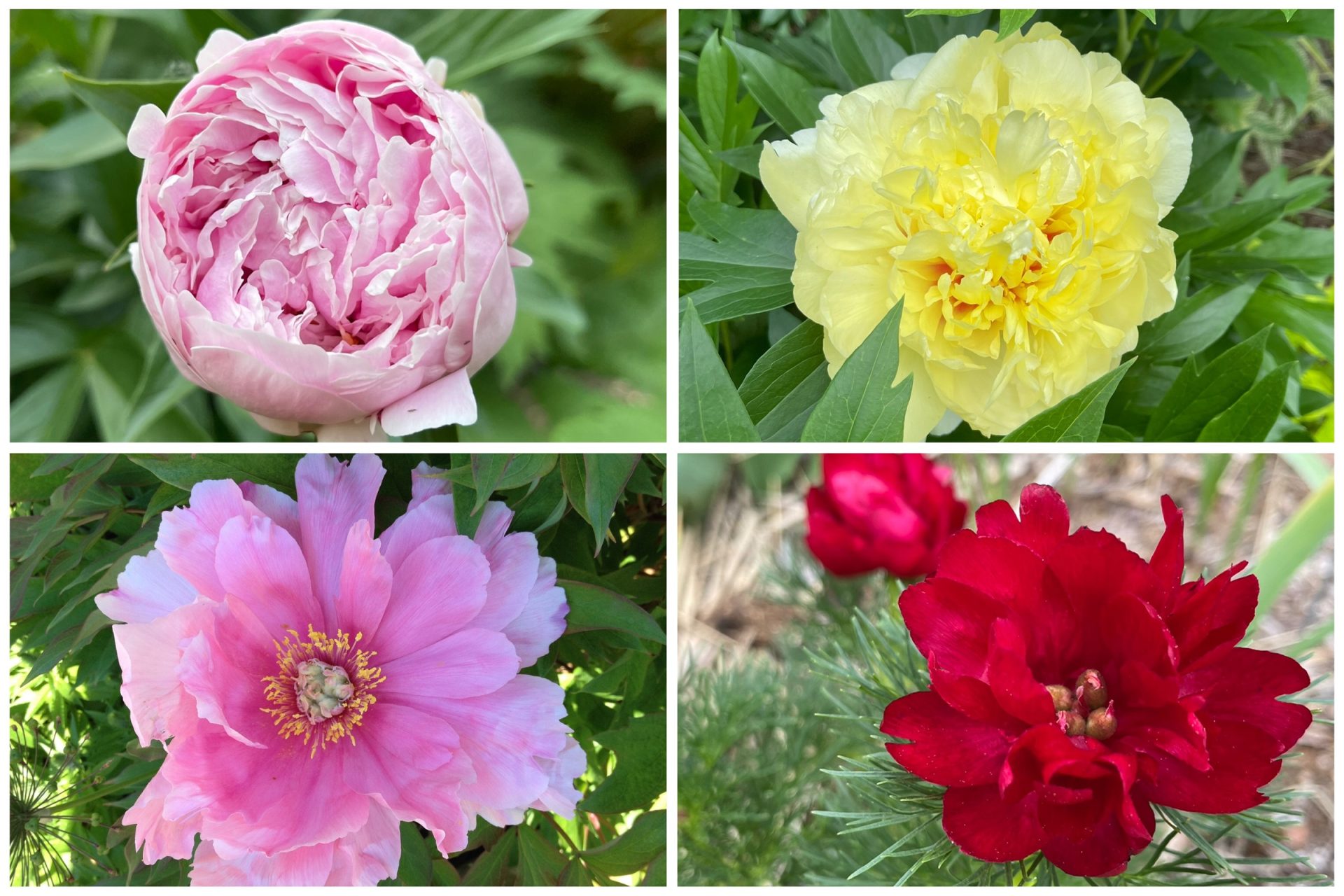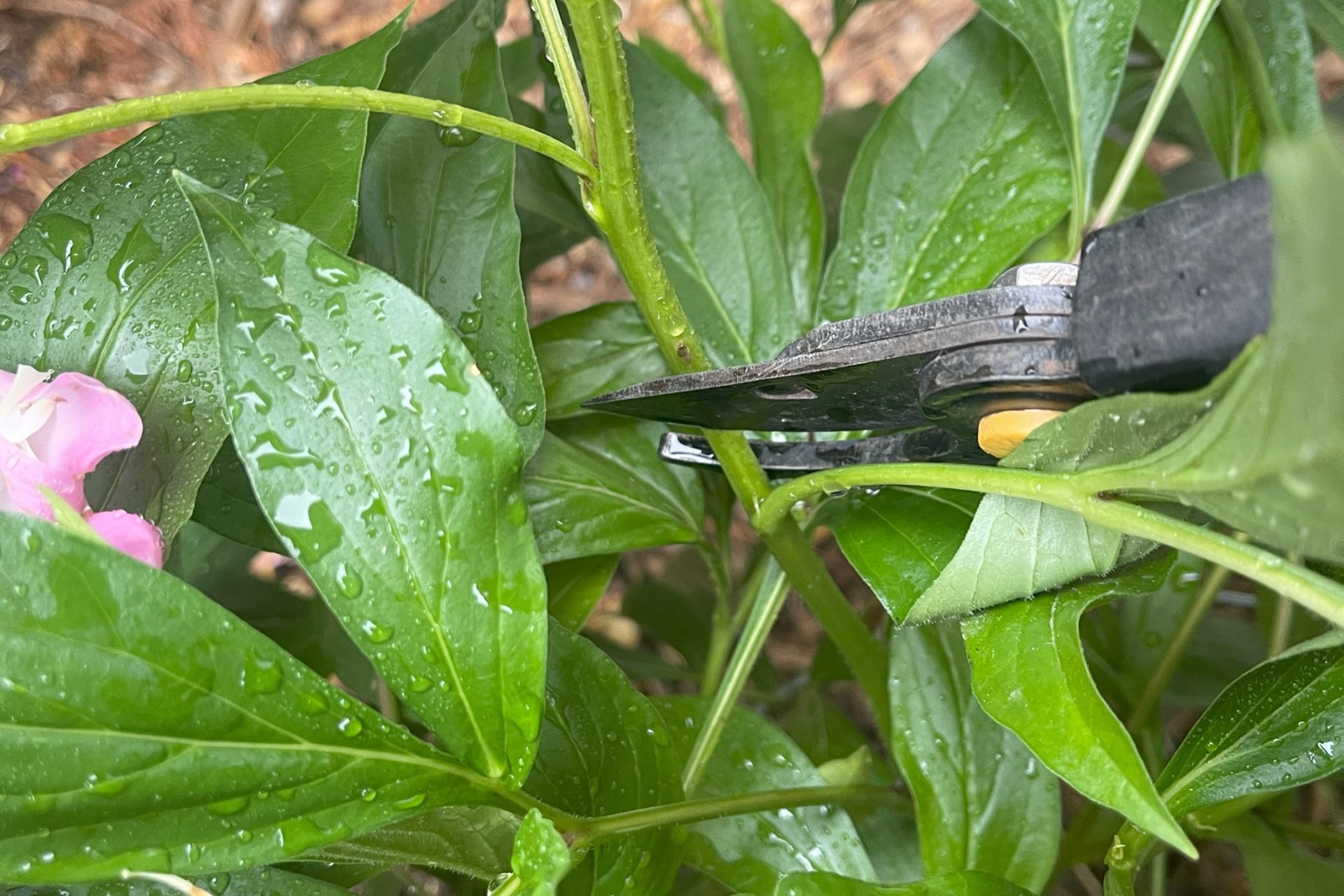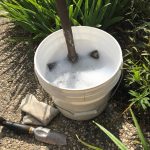Peonies are one of the most popular flowering plants in the world. Their delicate petals and vibrant colours add beauty and elegance to any garden or home. Learning how to grow peonies can be simple when you know their specific needs.
This comprehensive guide to growing and caring for Peonies includes everything you need to know, from selecting the best plant location to planting, fertilizing, pruning, and more.
So, whether you’re a seasoned gardener or just starting out, you’ll find everything you need to know about how to grow peonies!
Introduction to Peonies
A Brief History and Popularity

Peonies, with their stunning blooms and delicate fragrances, have captured the hearts of gardeners and flower enthusiasts for centuries.
These beautiful flowers have a rich history dating back thousands of years, originating in Asia and Europe.
In fact, Peonies were highly regarded in ancient China, where they were considered the “king of flowers” and were associated with wealth, honour, and prosperity.
Over time, Peonies gained popularity worldwide, and today, they are cherished for their elegance, versatility, and abundance of colours and forms.
From romantic pastel shades to vibrant hues, Peonies offer a wide range of options to suit any garden or floral arrangement.
The allure of Peonies lies not only in their captivating beauty but also in their symbolism. Peony blooms are often associated with romance, prosperity, and good fortune, making them popular for weddings, anniversaries, and other special occasions.

Want the inside scoop on more gardening tips? Get early access to all my blogs and exclusive content by signing up for my newsletter!
Types of Peonies: Exploring the Different Varieties

Peonies come in a wide array of varieties, each with its own unique charm and characteristics.
From the classic herbaceous Peonies to the stunning tree Peonies, there is a perfect Peony for every garden and flower enthusiast.
Let’s briefly dig into the different types of Peonies and explore their distinguishing features; for a deeper discussion of the different varieties, hop over to Choosing the Perfect Peony Variety for Your Garden.
1. Garden (Herbaceous) Peonies

Herbaceous Peonies are the most commonly grown Peonies, and they are known for their large, lush blooms.
Herbaceous Peonies have soft stems that die back to the ground during winter and grow afresh each spring.
They come in a wide range of colours, including shades of pink, red, white, and yellow.
Many herbaceous Peony varieties boast amazing fragrances and stunning floral displays, making them a must-have for any flower garden.
2. Tree Peonies (Paeonia suffruticosa)

Tree Peonies have woody stems and are known for their large, captivating, show-stopping flowers.
Unlike herbaceous Peonies, tree Peonies retain their structure throughout the year, adding structure and height to a garden.
These Peonies offer unique colours, including vibrant purples, rich yellows, and delicate pastels.
Their blooms are often larger and more intricate than those of herbaceous peonies, creating a truly breathtaking spectacle.
However, Tree Peonies are a bit tricky to grow in plant hardiness zones 3-4, so check variety hardiness zones carefully.
Related: What are Plant Hardiness Zones and How do They Work?
3. Intersectional Peonies (ITOH Peonies)

Also known as ITOH Peonies, Intersectional Peonies are a cross between Herbaceous and Tree Peonies.
They combine the best of both worlds, offering the robust growth and large flowers of tree Peonies with the easy care, herbaceous nature, and zone hardiness of herbaceous Peonies.
Intersectional peonies come in unique colours, including striking oranges, warm corals, and captivating bi-colour combinations.
4. Fernleaf Peonies (Peonia tenufolia)

Fernleaf Peonies are highly sought-after northern garden Peonies with uniquely dissected leaves that resemble ferns. They have a Plant Hardiness Zone rating of 2-8.
Fernleaf Peonies are herbaceous, which means they grow fresh from the ground each spring, just like Garden & ITOH Peonies.
Of all the kinds of Peonies, Fernleafs are the most challenging to start. Once established after transplanting, they are vigorous and exceptionally hardy.
They are among the first flowers to blossom in early spring, showing off their beautiful deep red single or seme-double flowers.
Choosing the Right Location for Peonies: Sunlight and Soil Requirements

These magnificent plants thrive in areas with ample sunlight and well-drained soil.
Peonies are sun-loving plants that require at least 6 hours of direct sunlight each day; the more sun they get, the better.
Adequate sunlight promotes healthy growth and vibrant blooms. Too much shade will hinder growth and result in fewer or no flowers at all.
In terms of soil, Peonies prefer a well-draining, rich and loamy soil.
They do not tolerate soggy conditions, so it is advisable to avoid planting them in areas prone to wet soil or standing water.
If you have heavy clay soil, consider amending it with organic matter such as compost or well-rotted manure to improve drainage and provide essential nutrients.

Want the inside scoop on more gardening tips? Get early access to all my blogs and exclusive content by signing up for my newsletter!
Planting Peonies Step-by-Step

Despite their vigour once they start growing, Peonies hate being transplanted, and they take their sweet time establishing roots and flowering.
The best time of year to plant (and divide) Peonies is in the fall due to the reduced environmental demands on their roots, but the most unique varieties of Peonies are usually available in the spring.
Peonies can be planted successfully in the spring with a vigilant eye on watering.
Peonies usually start to bloom in their third year of growth, but oh, it is worth the wait!
To ensure successful growth and blooming, it’s essential to plant them correctly.
Step 1: Choose the Right Location
As mentioned above, Peonies thrive in full sun or partial shade, so select a location in your garden that receives at least 6 hours of direct sunlight daily.
Additionally, ensure that the soil is rich, loamy, and well-drained, as Peonies do not tolerate soaked soil.

Step 2: Prepare the Soil
Before planting, prepare the soil and start by removing any weeds, rocks, or debris from the planting area.
Then, incorporate organic matter into the soil, such as compost, worm castings, or well-rotted manure, to improve its fertility and drainage. This will provide a nutrient-rich foundation for your Peonies to grow.
Avoid adding slow-release fertilizers or bone meal because soil that is too fertile will diminish flowering.
Step 3: Dig the Planting Hole
The circumference of the Peony planting hole should be a minimum of 15 cm (6″) wider and 15 cm (6″) deeper than the Peony root to accommodate and encase the Peony root system with soft soil into which it can dig and spread its tuberous roots.
For more details on this step, see How to Prepare a Great Planting Hole. Remember to skip the supplementary fertilizer.

Step 4: Place the Peony Root in the Prepared Planting Hole
Fill the bottom of the planting hole with enough soil to position the crown; this is the area where the stem meets the root, no more than 2.5-5 cm (1-2″) below the soil.
Gently place the Peony root in the hole’s center, ensuring that the eyes (small reddish buds) are facing upwards.
If there are no eyes, use the crown to guide your positioning.
Avoid planting the Peony too deep, as this can hinder blooming.
Step 5: Backfill the Planting Hole
While holding the Peony root in place, carefully backfill the hole with the amended soil to the position described above.
Very lightly firm the soil around the root to ensure it is in contact with the soil, but avoid compacting it too tightly.

Step 6: Water and Mulch
After planting, thoroughly water the Peony to settle the soil and provide essential hydration to the roots. If the soil sinks past the crown, add more so the Peony crown is 2.5-5 cm (1-2″) below the soil.
Apply a layer of natural mulch, such as wood chips, around the plant to help retain moisture, suppress weeds, and regulate soil temperature.
Related: What is Mulch? Making Garden Magic with Mulch

Want the inside scoop on more gardening tips? Get early access to all my blogs and exclusive content by signing up for my newsletter!
Care and Maintenance Tips for Growing Healthy Peonies

Let’s talk about Peony care and maintenance. This section will cover watering, fertilizing, pruning, and support options for Peonies.
Watering Peonies
Peonies need the most hydration support in their first three years of growth, and when it comes to watering Peonies, it’s important to strike the right balance.
Over-watering can lead to root rot and other fungal diseases, while under-watering can cause the plants to wither and produce smaller blooms.
Peonies prefer consistent moisture without waterlogged soil, so to prevent oversaturation, always assess soil hydration before watering Peonies.
A quick way to check soil moisture is to insert the entire length of your index finger into the soil. If it is dry at the tip or the first knuckle, it’s time to give the Peony a drink.
Once Peony roots grow deep and are well established, usually at the three-year mark, they don’t usually need supplemental water, especially if they are mulched.
However, they will need some water if the growing year is particularly hot and dry.
Fertilizing Peonies

Peonies don’t typically need fertilizer, particularly if they are growing in fertile, well-draining, mulched soil. Mulch adds nutrients to the soil as it decomposes.
Too much fertilizer can result in weak stems and lush green leafy growth minus flowers because it can stall flowering.
If you’d like, you can give them a small amount of a well-balanced slow-release fertilizer, like 10-10-10, in early spring, but I say this with caution.
Related: 8 Reasons Why Peonies Won’t Bloom
Pruning Peonies

Peonies grow best when pruned back at two different phases.
The first time to prune, or trim them, is when the blossoms have died. Take off the old flowers with clean garden clippers 2-3 nodes below the dead flower.
The other time to prune Peonies is to get them ready for new growth, either in the late fall, when their stems have died back, or early spring before new growth begins.
Be sure to clean your pruning tools with hot, soapy water before and after pruning to prevent the spread of potential diseases.
Start by cutting back the old stems to about 5-7.5 cm (2-3″) above the ground to remove dead or diseased portions and promote fresh growth.
How to Stake or Support Peonies

As the Peonies grow, especially garden Peonies, their stems may become top-heavy and bend under the weight of their blossoms.
To prevent this flopping, I support the plant with Peony cages, stakes, and large tomato cages with the bottom wrung cut off.
Place the support structures in the ground around the Peonies early in the growing season, so they have time to grow into them. As they grow, the foliage hides the support structures.
When supporting Peonies, I never tie them, but if tying is necessary, do not secure the stems too tightly, leaving some room for them to grow and sway naturally in the wind.
This movement strengthens the stems, making them more resilient. Also, loosely tying the stems ensures that they won’t be constricted, allowing for proper circulation and preventing potential diseases.
Check Peonies Regularly

Regularly inspect your Peonies throughout the growing season by taking a quick, intentional look at them as you stroll in your garden.
If you notice any damaged or diseased stems, promptly remove them. This will help maintain the overall health of the plant and prevent the spread of any issues.
Grow Your Own Peony Garden!
With their beautiful flowers, Peonies add a touch of elegance, charm, and romance to any sunny garden.
The best news is that they will be an easy-care perennial plant once established. Follow my tips and tricks above to learn everything you need to know about how to grow peonies.
Equipped with knowledge about selecting the right variety, providing proper soil conditions, and maintaining a Peony garden, you can start planning your garden and get ready to enjoy the breathtaking beauty of these flowers. Subscribe to my newsletter for more gardening tips, and if you have questions about how to grow peonies please contact me!
©Sharon Wallish Murphy ©Gardening with Sharon































